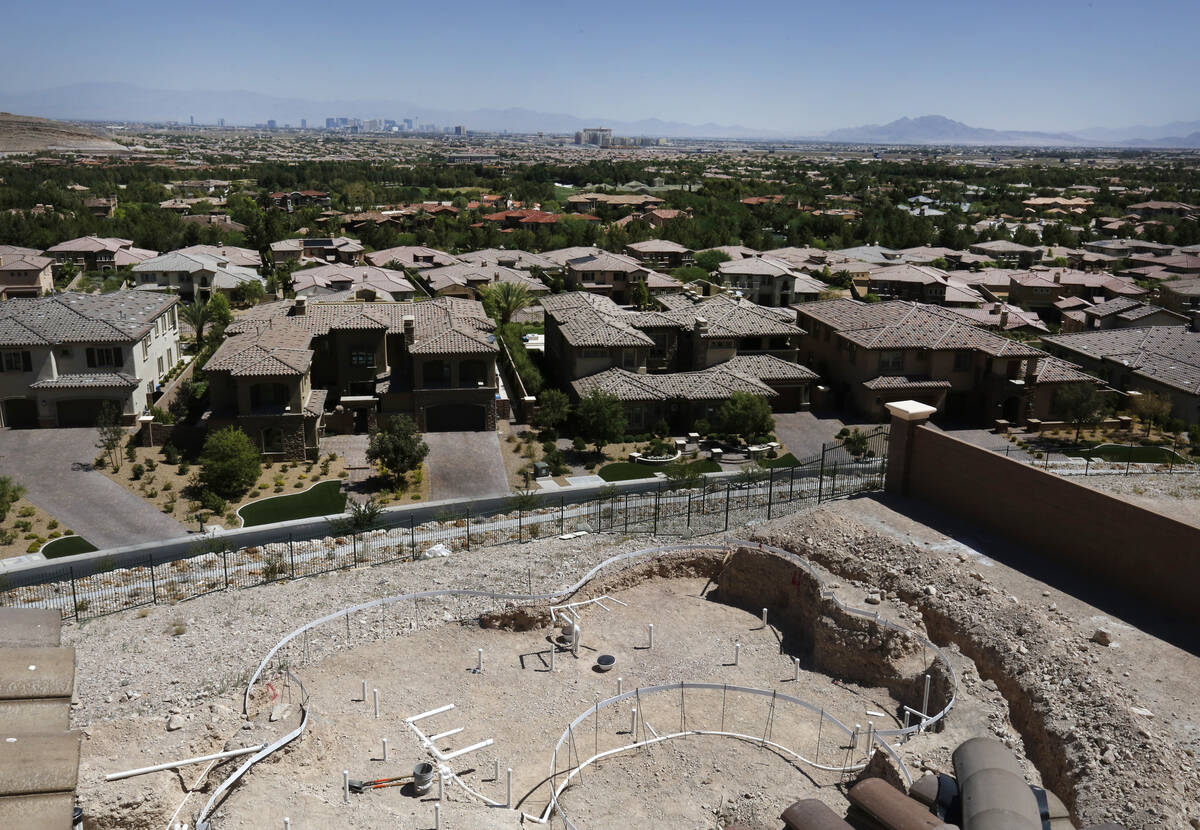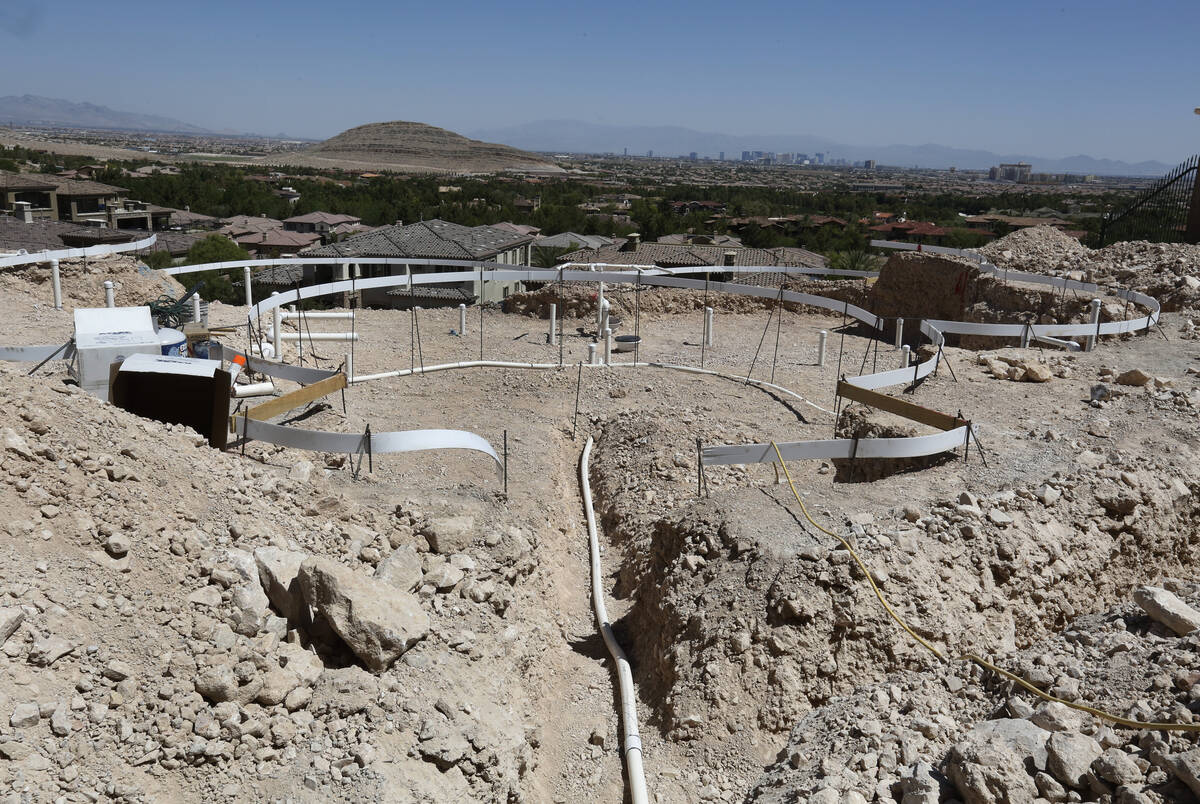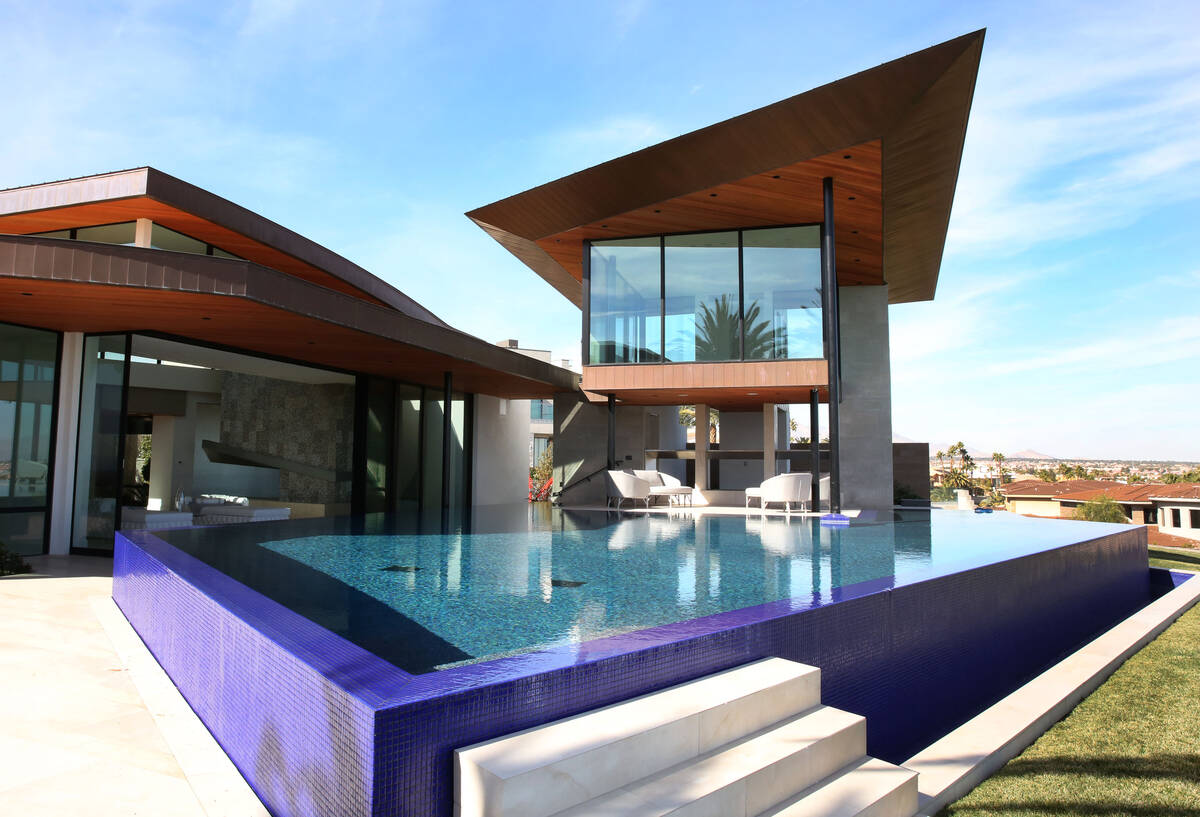Sink or swim: Water district eyes limits on pool size
As water managers grapple with shortages across the southwest, pool sizes in the Las Vegas Valley are the next target being eyed for cuts.
The Las Vegas Valley Water District has proposed a change to its service rules that would restrict new pool construction in single-family residences to 600 square feet, roughly the size of a three-car garage. The proposed service rule change is expected to go before the Clark County Commission on Tuesday morning.
If the proposed changes to the service rules are approved, it would allow the water district to start enforcing the 600-square-foot limit for pools that obtain permits after Sept. 1.
The size limit is expected to save 3.2 million gallons of water every year and is part of a “mosaic” approach to reduce water consumption in the Las Vegas Valley.
Seventy-five percent of pools installed in the past five years were already 600 square feet or less. The average pool size in southern Nevada is about 475 square feet. “This really only affects the top 25 percent of swimming pools being constructed each year,” Bronson Mack, a district spokesperson, said.
The changes would also affect only new pool and spa construction — pre-existing residential pools exceeding 600 square feet would be exempted.
Dale Devitt, a professor at UNLV and director of the Center for Urban Water Conservation, said the proposed changes don’t surprise him. “It was just a matter of time before they were going to hone in on swimming pools.”
He said that pools without covers have extremely high rates of water loss, even greater than areas covered by turf grass. That’s because without any vegetation, he explains, there’s nothing to keep the water from evaporating.
For example, a 3,000-square-foot pool evaporates over 145,000 gallons of water annually, which is more water than a typical single-family home uses in a year.
“We need to have functional-sized swimming pools just like we have functional grass,” Mack said in reference to the recent ban on non-functional grass.
A ‘luxury’ valley can’t afford
Colby Pellegrino, deputy general director of resources for the Southern Nevada Water Authority, said in a presentation to the Boulder City City Council on July 12 that the organization has seen pools as large as 5,000 square feet going into luxury properties around the Valley.
“That’s really a luxury that the community cannot afford,” she said.
The SNWA Board of Directors is also meeting Thursday to discuss a resolution in support of the 600-square-foot limit and urging municipalities to take the appropriate steps to implement the changes into their codes or ordinances.
The water district serves the city of Las Vegas and areas of unincorporated Clark County. However, North Las Vegas, Henderson and Boulder City all have plans in the coming months to discuss code changes at the municipal level that would reflect the pool size limitations.
Stakeholders have mixed reactions to the proposed changes.
Amanda Moss, senior director of government affairs for the Southern Nevada Home Builders Association, said in a statement that even though the policy will negatively impact the association’s members, the regulations are “the right thing to do. For conservation and for the economic health of our Valley.”
Other groups like pool builders, though, have serious concerns. While commending the SNWA for the work it’s done to conserve water in the Valley, one longtime Las Vegas pool builder said he wishes he’d been able to give more input.
The pool builder, who only agreed to comment anonymously out of concerns for harassment, said that nobody needs “monster-sized” pools or ornamental water features. “Everyone should have to make sacrifices. We’re in a dire situation,” he said.
But the builder thinks a one-size-fits-all 600-square-foot threshold may not be the most appropriate solution since residential lot sizes can vary widely.
“Some people have two-acre lots with 10,000 square-foot homes,” he said. “A 20 by 30 pool would be like a postage stamp there.”
Builders propose alternatives
Pool builders have proposed alternatives, like allowing pool sizes to increase based on lot size — up to a cap. Beyond that limit, owners would have to pay a conservation fee per square foot that would be used to promote water conservation measures. And pool owners could be given exemptions to the size limit if they install an automatic pool cover, which greatly reduces water evaporation.
The pool builder claims these solutions could end up saving 29 percent more water than the 600 square foot limit. “Everyone wants to save water,” he said. “We understand that we have to give. We want to be part of the solution.”
Mack, though, said that implementing a standardized size limit to pools in every residential lot would create equity across properties. “Even if you have a really small lot or a very large lot size, the rules for your swimming pool would be the same across the board,” Mack says, which would help avoid water inequities based on lot size.
Ultimately, the pool builder feels his concerns and suggestions have not been taken seriously. The SNWA has held three meetings since March 15 to discuss the pool size limits with stakeholders, but the builder felt those meetings were unproductive.
Implementing the proposed pool development standards would reduce water usage by only 0.1 gallons per capita per day, making it the least impactful water-saving measure outlined in the SNWA’s 2021 Water Resource Plan.
The builder said the regulation would have negative repercussions for his business. “We’re just a small company. … We’ve put a lot of time and effort into what we feel is a better solution. It’s our livelihood on the line, and (the livelihoods) of our employees and subcontractors.”
The Las Vegas Realtors association did not comment.
Pellegrino acknowledged the proposed pool size limit was unpopular among many, but noted, “That’s where we’re at in our water conservation journey. There is no easy button left.”
Devitt adds that although there might be room for a compromise between stakeholder groups and the water authority, “Eventually, we need to get people to embrace living in the desert.”
Colton Poore is a 2022 Mass Media reporting fellow through the American Association for the Advancement of Science. Email him at cpoore@reviewjournal.com or follow him on Twitter @coltonlpoore































